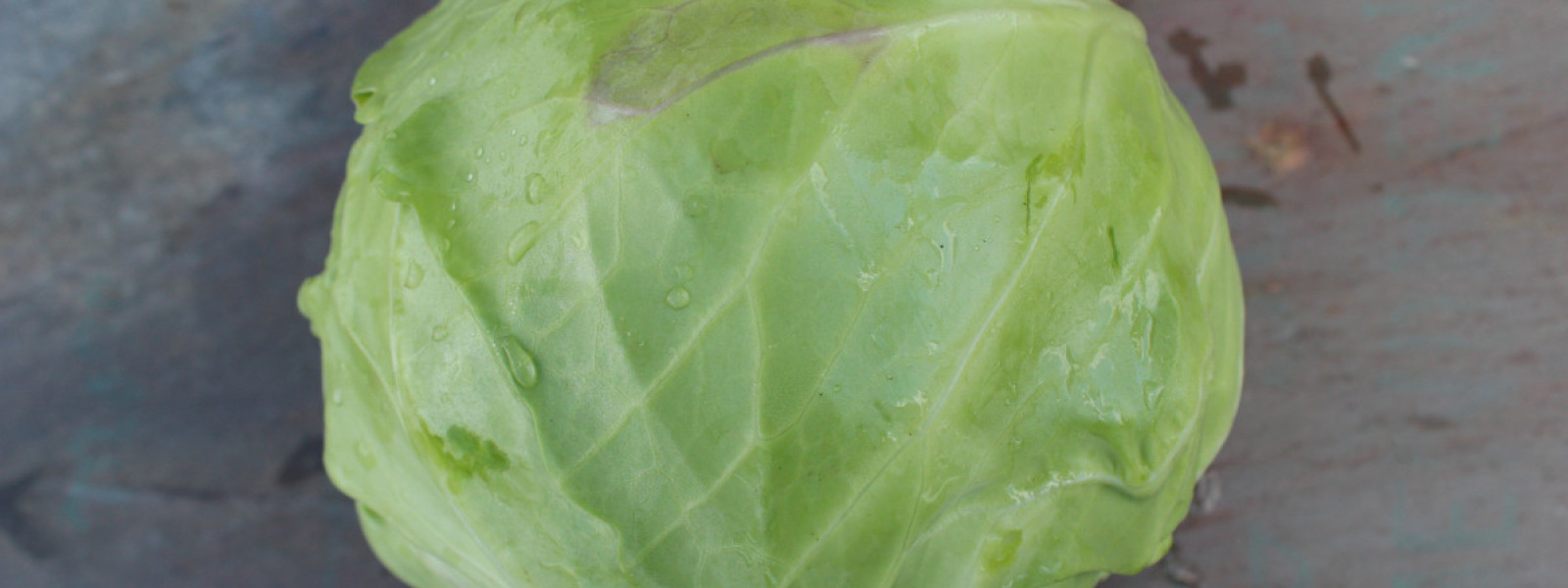Cabbage: Using & Storing
Are you new to cabbage? Learn more about it here, or keep reading to find out what we suggest you do to make the most of the harvest.
Using Cabbage
Cabbage is an incredibly versatile vegetable. In many regions of the world, cabbage is featured in a number of delicious, healthy and hearty dishes. Here are some tips for how to use cabbage.
- Cut cabbages first into quarters and then diagonally across the wedge. Then, cut into thin slices for tossing raw into salads or cut a little thicker for steaming or boiling.
- Eat cabbage raw or just lightly cooked. Overcooked cabbage may produce a strong odor and flavor.
- Steam wedges of cabbage for 5-7 minutes. Top with butter and a pinch of salt and pepper or even with grated cheese.
- Purple cabbage is beautiful, decorative and tasty: add it to salads, pasta salads, fried rice, etc.
- Cabbage is wonderful added to sautes and stir frys. It tastes great alongside peppers, onions, etc.
- You can boil cabbage for five minutes with a chopped onion and add to mashed potatoes.
- Cabbage leaves can be stuffed with any number of yummy ingredients and then baked to perfection.
- Large cabbage leaves can replace a tortilla for light and summery wrap sandwiches.
- Cabbage is well known in coleslaw. Chop finely or shred and then toss with shredded carrots and green onions. Add any other vegetables that you would like. Toss with a yogurt/mayonnaise dill dressing or a vinaigrette.
We suggest trying this unique recipe for a Hot and Sour Salad. Or keep it simple with a summer coleslaw.
Storing Cabbage
In many cold regions of the world, cabbage is well-loved precisely because it stores so well. In the depths of winter, when snow covers our gardens, it is a great thing to look to the cabbage in our fridges to provide some local, fresh green taste! Proper storage slows down the process of respiration of a cabbage. The faster the cabbage respires, the more quickly it breaks down and begins to spoil. Follow the tips below to successfully store your cabbage for winter consumption.
- If you are harvesting your own cabbage from your garden or if you buy cabbage from the farmstand, make sure to leave all leaves on the head. The outer leaves of the cabbage head work to protect the inner and more tender leaves, especially helping with moisture retention.
- Do not wash cabbage until you are ready to use it. Refrain from washing before storing.
- Cabbage can store well in a hydrator drawer. You can put the cabbage in a plastic bag to help retain moisture but it isn’t totally necessary.
- Handle your cabbage with care. If you use only a partial head, make sure to tightly wrap the remainder and put into the fridge. Try to minimize any bruising of your cabbages. Any kind of cell damage makes the cabbage go by more quickly and degrades the vitamin C content.
- If cabbage is properly stored, it can last from 3 weeks to up to 2 months in your refrigerator. In optimum root cellar conditions, it can even last longer.
Enjoy cabbage, in every season!!
Source: “From Asparagus to Zucchini” by Madison Area Community Supported Agriculture Coalition, CCF staff

